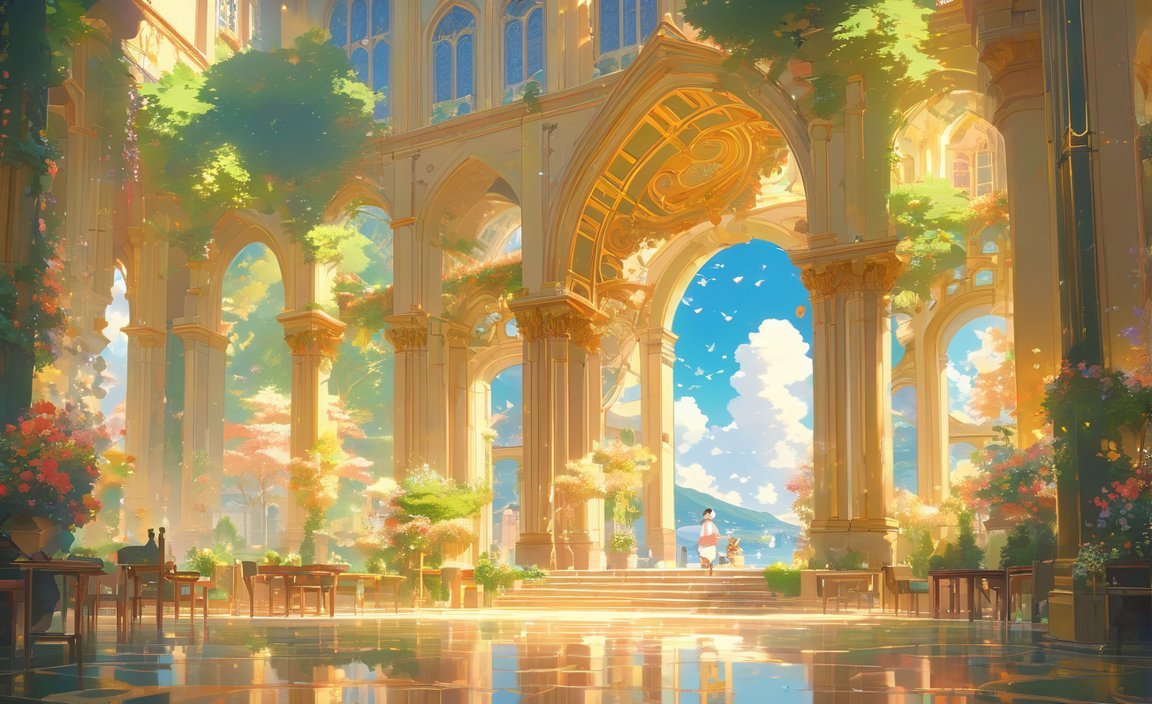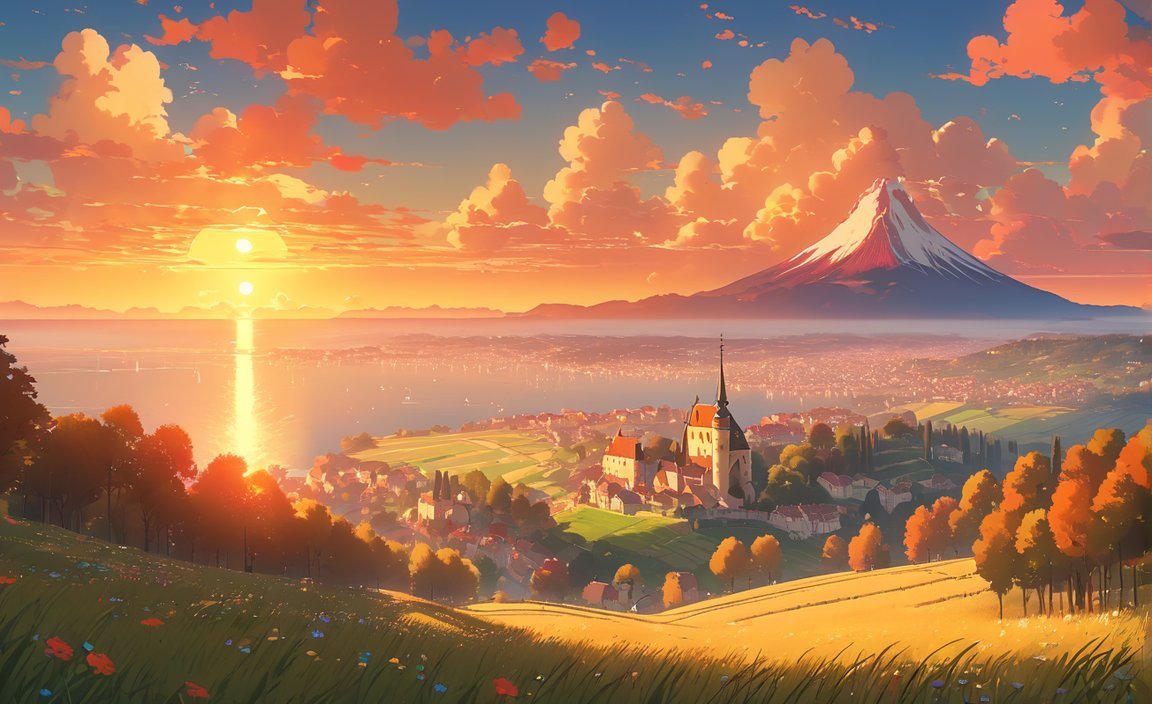Discover the captivating allure of France as we delve into its intriguing facts, rich heritage, and exquisite cuisine. Embark on a journey that unveils lesser-known aspects of the country’s history, art, and culinary traditions. With a fresh perspective and engaging storytelling, we aim to immerse you in the vibrant tapestry of France’s cultural exploration. Join us as we unravel the secrets and delights of this enchanting nation in our article, [Intriguing Facts: Uncovering France’s Rich Heritage and Cuisine].

Key Takeaways:
1. France is the most-visited country in the world, welcoming over 80 million tourists annually.
2. Although smaller than Texas, France is the largest country in the EU in terms of land area.
3. The Louvre, the largest art museum in the world, houses famous artworks like the Mona Lisa.
4. The French have a unique culinary palette, consuming 25,000 tons of snails and over 1,500 types of cheese each year.
5. Supermarkets in France are not allowed to throw away food and must instead donate it to charities or food banks.
6. France had a king, Louis XIX, with the shortest reign in history lasting only 20 minutes.
7. The concept of camouflage originated from the French verb “camoufler,” meaning “to disguise,” which was developed by the French army.
8. The Tricolor, France’s official flag, is highly recognizable and has inspired flags of many other countries.
9. French was the official language of England for about 300 years after the Norman Conquest.
10. France is home to the Millau Viaduct, the tallest bridge in the world, towering over the Eiffel Tower.
France Interesting Facts
France, the land of romance, exquisite cuisine, and rich history, holds a plethora of intriguing facts that are sure to captivate your imagination. From its famous landmarks to its culinary delights, there is no shortage of fascinating tidbits waiting to be discovered. So let’s delve into the world of France’s captivating facts.
1. France – The Epicenter of Tourism
Did you know that France attracts over 80 million tourists per year? Yes, you heard it right. This makes France the most-visited country in the world, a testament to its irresistible charm and allure.
2. Size Doesn’t Matter, Except in Land Area
Despite being smaller than the state of Texas, France boasts the title of the largest country by land area in the European Union. With its diverse landscapes, from picturesque coastlines to majestic mountains, this country truly offers something for every traveler.
3. The Louvre – A Treasure Trove of Art
If art is your passion, then the Louvre is a must-visit destination. This iconic museum houses the world’s largest collection of art, including the enigmatic Mona Lisa and countless other masterpieces. Prepare to be awestruck by the sheer beauty and significance of the artwork that graces its halls.
4. An Epicurean Paradise
French cuisine is renowned worldwide for its sophistication and decadence. But did you know that the French consume a staggering 25,000 tons of snails each year? Yes, snails, or escargots as they are known, are a delicacy that tickles the taste buds of many French food enthusiasts.
5. A Cheese Lover’s Dream
Cheese lovers rejoice! France is home to over 1,500 different types of cheese. From creamy Brie to pungent Roquefort, each region boasts its own unique variety, ensuring a tantalizing culinary adventure for cheese connoisseurs.
6. No Waste Allowed
In a bid to tackle food waste, French supermarkets are legally obliged to donate unsold food to charities or food banks. This noble effort not only helps combat hunger but also promotes sustainable practices and solidarity within the community.
7. The Reign that Almost Wasn’t
In an odd twist of fate, Louis XIX holds the record for the shortest reign in history, lasting only a mere 20 minutes. A little-known fact that speaks volumes about the intricacies of French history.
8. Camouflage, a French Art
The French army can take credit for inventing camouflage. The term itself stems from the French verb “camoufler,” meaning “to disguise.” Who knew that this vital military technique would go on to become a globally recognized camouflage pattern?
9. Tricolor Pride
France’s official flag, known as the Tricolor, is one of the most recognized flags worldwide. Its vertical stripes of blue, white, and red have not only become a symbol of French national pride but also served as inspiration for numerous other countries’ flags.
10. A Linguistic Influence
For nearly 300 years, French was the official language of England following the Norman Conquest. This linguistic influence seeped into English vocabulary, leaving a lasting impact on our language today.
11. A Bridge of Unparalleled Height
Among France’s engineering marvels, the Millau Viaduct stands tall, literally. This architectural masterpiece stretches across the Tarn Valley, making it the tallest bridge globally, even surpassing the height of the iconic Eiffel Tower.
France, a country steeped in history and brimming with cultural treasures, unveils its captivating facts, inviting you to explore its rich heritage and delight in its culinary wonders. Prepare to immerse yourself in the magic of France, where every corner holds a fascinating story waiting to be told.
If you’re curious about England’s rich and fascinating history, you’ll definitely want to check out these interesting facts about England. From the iconic landmarks of London to the charming countryside, England has a lot to offer. Click here to learn more!
Are you ready to be amazed by some Korea fun facts? Explore the unique culture, delicious cuisine, and stunning landscapes of Korea by clicking here. You won’t be disappointed!
Calling all nature lovers! Discover some fun facts about Zion National Park that will leave you in awe of its majestic beauty. Click here to explore the breathtaking wonders of this iconic national park.
Embark on a journey to uncover the hidden gems and captivating history of Armenia with these interesting facts about Armenia. Don’t miss out on the opportunity to delve into a world of traditions and legends by clicking here.
If you’re seeking lesser-known facts about Albania, look no further. Click here to discover intriguing snippets about this enchanting country that will leave you wanting to pack your bags and embark on an adventure.
Prepare to be fascinated by these interesting Philippines facts that will ignite your wanderlust and spark a desire to explore this tropical paradise. Click here to uncover the wonders of the Philippines.
Happy exploring!
French Cuisine: A Journey Through Exquisite Flavors and Techniques
French cuisine is renowned for its exquisite flavors and techniques, which have captivated food enthusiasts and connoisseurs worldwide. This article takes you on a journey through the evolution and influence of French cooking while highlighting the creation of the first culinary guide, “Le Guide Culinaire,” by Georges Auguste Escoffier.
French Cooking: A Rich and Colorful History
French cuisine’s rich history can be traced back to medieval times when the nobility indulged in luxurious multi-course meals, while peasants relied on vegetables and legumes. During this period, elite kitchens showcased the use of expensive salt and imported spices (Escoffier).
Over the centuries, French cooking underwent significant transformations, gradually shifting toward lighter dishes that are more recognizable today. It wasn’t until the 1600s that cookbooks and documented techniques were published, contributing to the development of French cuisine (Escoffier).
Haute Cuisine: The Epitome of French Gastronomy
One of the most significant aspects of French cuisine is “haute cuisine,” meaning “high cuisine.” This style of cooking is characterized by elaborate and refined dishes that have become synonymous with French gastronomy (Escoffier). Haute cuisine emphasizes the use of fresh ingredients, precision in technique, and attention to presentation, creating a truly exceptional dining experience.
Nouvelle Cuisine: A Modern Twist on Tradition
In the 1900s, a culinary movement known as “nouvelle cuisine” emerged in France. This innovative approach focused on using high-quality, fresh ingredients while simplifying traditional recipes. Nouvelle cuisine aimed to create lighter and more inventive dishes while preserving the rich flavors and techniques that define French cooking (Escoffier).
The Creation of “Le Guide Culinaire” by Escoffier
Georges Auguste Escoffier, a French culinary pioneer often referred to as the “king of chefs and the chef of kings,” left an indelible mark on French cuisine. His revolutionary work includes the creation of the first culinary guide, “Le Guide Culinaire.” This influential book, published in 1903, remains a significant reference for chefs worldwide (Encyclopedia Britannica).
Key Takeaways:
- French cuisine has a rich history that can be traced back to medieval times, with the influence of the nobility and the development of documented techniques.
- Haute cuisine, known for its refined and elaborate dishes, represents the epitome of French gastronomy.
- The culinary movement “nouvelle cuisine” brought a modern twist to French cooking, emphasizing high-quality ingredients and innovative approaches.
- Georges Auguste Escoffier’s “Le Guide Culinaire” revolutionized the culinary world, serving as a comprehensive resource for chefs across the globe.
Sources:
– Escoffier: French Cooking: How and Why French Cuisine Came to Rule the World
– Britannica: Auguste Escoffier | French Culinary Pioneer & Innovator
France’s UNESCO World Heritage Sites: A Glimpse into Cultural Riches
France, the land of romance and exquisite cuisine, also boasts an exceptional cultural heritage. It is home to a multitude of UNESCO World Heritage sites that capture the essence of its history, art, and architecture. Among these remarkable sites, two stand out as iconic symbols of France’s captivating past: the historic city of Versailles and the Mont-Saint-Michel abbey.
Versailles: A Testament to Grandeur
Situated just outside of Paris, the historic city of Versailles is an extraordinary testament to opulence and grandeur. Once the residence of French kings, Versailles is adorned with stunning gardens, intricate architecture, and lavish furnishings. Its Palace of Versailles, a masterpiece of Baroque design, attracts millions of visitors each year.
Mont-Saint-Michel: A Marvel of Medieval Architecture
In the breathtaking landscape of Normandy lies the enchanting Mont-Saint-Michel abbey. This fortified island abbey, perched atop a rocky outcrop, proudly showcases its medieval architecture and religious significance. Surrounded by the vast expanse of the sea, Mont-Saint-Michel is a sight to behold, transporting visitors to a bygone era.
While Versailles and Mont-Saint-Michel represent the epitome of France’s UNESCO World Heritage sites, they are just a glimpse of the nation’s cultural riches. France boasts a plethora of other sites that have earned this prestigious recognition.
Beyond Versailles and Mont-Saint-Michel: A Treasure Trove of Heritage
- Carnac Megalithic Sites: Transporting us back in time, the Carnac megalithic sites amaze with their enigmatic alignment of ancient standing stones. These prehistoric wonders continue to captivate and intrigue visitors from around the world.
- Saint-Denis Cathedral: Standing proudly as the final resting place of French monarchs, the Saint-Denis Cathedral is a Gothic masterpiece. Its intricate architecture embraces centuries of art and history, making it a must-visit site for cultural enthusiasts.
- Rouen: Packed with timber-framed buildings and historical significance, the urban area of Rouen beckons with its well-preserved architectural heritage. The Rouen Cathedral, Basilica of Saint Ouen, and Church of Saint Maclou are testament to the city’s rich past.
- Vaux-le-Vicomte Castle: Nestled in the scenic countryside, Vaux-le-Vicomte Castle offers a mesmerizing glimpse into French Baroque architecture. Its elaborate gardens serve as a testament to the grandeur that once inhabited these hallowed halls.
- Fortified Cities of the Low Countries: A reminder of the region’s historical and strategic importance, the fortified cities of the Low Countries showcase the architectural legacy of north-western Europe.
- Mount Saint Victoire and Paul Cézanne Sites: As an inspiration to the famed post-impressionist artist Paul Cézanne, Mount Saint Victoire holds a special place in cultural history. Its towering presence and breathtaking landscapes continue to inspire artists and nature enthusiasts alike.
- Écrins National Park: Nature lovers are in for a treat at Écrins National Park. With its diverse flora and fauna, and stunning mountain vistas, this park is a haven for those seeking a deeper connection with France’s natural wonders.
- Guérande Salt Marshes: The Guérande Salt Marshes offer more than just picturesque landscapes. For centuries, this unique cultural landscape has been the site of salt production, showcasing the traditions of the region.
- Bay of Marseille: The Rade de Marseille, a natural harbor, has played a pivotal role in the maritime history of the region. Its scenic beauty and historical importance make it a captivating UNESCO World Heritage site.
- Roman Narbonensian Cities and Area: Nîmes, Arles, and Glanum, along with their aqueducts and other Roman structures, bring to life the ancient Roman presence in France. These cities serve as a window into the vibrant history of the region.
These remarkable UNESCO World Heritage sites provide an enriching experience for visitors, allowing them to immerse themselves in the rich tapestry of French history, art, and culture. Each site tells a unique story, serving as a testament to the enduring legacy of this remarkable nation.
Key Takeaways:
– France is home to numerous UNESCO World Heritage sites, showcasing its rich cultural and natural heritage.
– The historic city of Versailles and the Mont-Saint-Michel abbey are iconic symbols of France’s captivating past.
– Beyond these two sites, France boasts many other remarkable UNESCO World Heritage sites, including the Carnac Megalithic Sites, Saint-Denis Cathedral, Rouen, Vaux-le-Vicomte Castle, Fortified Cities of the Low Countries, Mount Saint Victoire and Paul Cézanne Sites, Écrins National Park, Guérande Salt Marshes, Bay of Marseille, and Roman Narbonensian Cities and Area.
– Each site offers a unique glimpse into French history, art, and architecture, captivating visitors with its beauty and cultural significance.
Sources:
– Wikipedia: List of World Heritage Sites in France
– France.fr: Unesco: France’s heritage in the spotlight
The French Revolution: A Catalyst for Political and Social Transformations
Key Takeaways:
- The French Revolution, spanning from 1789 to 1799, was a significant historical event that brought about substantial political and social changes in France.
- The revolution was triggered by a variety of factors, including economic hardships, social inequality, and the desire for political reform.
- Key events during the French Revolution included the storming of the Bastille, the establishment of a French republic, the Reign of Terror, and the rise of Napoleon Bonaparte.
- The revolution had a profound impact on France and the world, influencing the development of democracy and human rights.
The French Revolution, a significant historical event that ignited major political and social transformations, took place from 1789 to 1799. It was a revolutionary movement in France that marked the end of the ancien regime and reshaped the nation’s political landscape. The revolution’s causes were multi-faceted, stemming from economic challenges, social inequality, and the desire for political reform.
The seeds of the revolution were sown when Charles Alexandre de Calonne, the controller general of finances, proposed financial reforms that faced opposition from the aristocracy. This led to a revolt by the aristocracy, which lasted from 1787 to 1789. The underlying grievances of the widespread population served as fuel for the eruption of the revolution.
One of the most iconic moments of the French Revolution was the storming of the Bastille on July 14, 1789. This event symbolized the overthrow of the absolute monarchy and the beginning of a new era. Subsequently, a French republic was established in 1792, signaling a shift towards more democratic forms of governance.
However, the revolution also witnessed dark periods, such as the Reign of Terror. From 1793 to 1794, the Committee of Public Safety, led by Maximilien Robespierre, initiated a campaign of intimidation, persecution, and executions, aiming to consolidate power and stifle counter-revolutionary activities. This period was characterized by extreme political violence, reflecting the turbulent nature of the revolution.
The French Revolution came to a turning point in 1799 with the rise of Napoleon Bonaparte. Through various military campaigns and political maneuvers, Napoleon seized power and established himself as the leader of France. His reign marked a new phase in French history, characterized by ambitious reforms and military expansion.
The French Revolution had far-reaching consequences not only for France but also for the world. It significantly influenced the development of democracy and human rights, inspiring other revolutionary movements in different parts of the globe. The events and ideals of the revolution continue to shape political discourse and social movements to this day.
To delve deeper into the French Revolution and its impact, you can refer to the following sources for further information:
– Britannica – French Revolution
– History.com – French Revolution

FAQ
Q1: What is the significance of French cuisine in the culinary world?
A1: French cuisine is widely regarded as one of the most prestigious and influential cuisines in the world. Its rich history, emphasis on fresh ingredients and precise techniques, and the overall dining experience have solidified its rule over the culinary world.
Q2: How has French cuisine evolved over the centuries?
A2: French cuisine has undergone significant transformations and adaptations over the centuries. It began shifting towards lighter dishes during the Middle Ages and gradually developed techniques and styles. In the 1900s, nouvelle cuisine emerged, focusing on high-quality, fresh ingredients and innovative dishes while maintaining the rich flavors and techniques of French cooking.
Q3: What are some iconic dishes and techniques in French cuisine?
A3: French cuisine has produced iconic dishes such as coq au vin and quiche. It has also popularized techniques like mirepoix, a combination of onions, celery, and carrots that forms the backbone of its flavors.
Q4: How has French cuisine influenced the culinary world?
A4: French cuisine’s influence can be felt worldwide, with chefs and food enthusiasts embracing French cooking techniques and flavors. Its complex history, emphasis on technique and ingredients, and the overall dining experience have laid the foundations for many other styles and specialties.
Q5: What recognition has French cuisine received?
A5: French cuisine gained recognition when UNESCO added the gastronomic meal of the French to its Representative List of the Intangible Cultural Heritage of Humanity. Auguste Escoffier, a French culinary pioneer, also played a crucial role in elevating French cuisine to its esteemed position.
- Unveiling Bernhard Caesar Einstein’s Scientific Achievements: A Legacy in Engineering - July 15, 2025
- Uncover who is Jerry McSorley: CEO, Family Man, Business Success Story - July 15, 2025
- Discover Bernhard Caesar Einstein’s Scientific Contributions: Unveiling a Legacy Beyond Einstein - July 15, 2025















